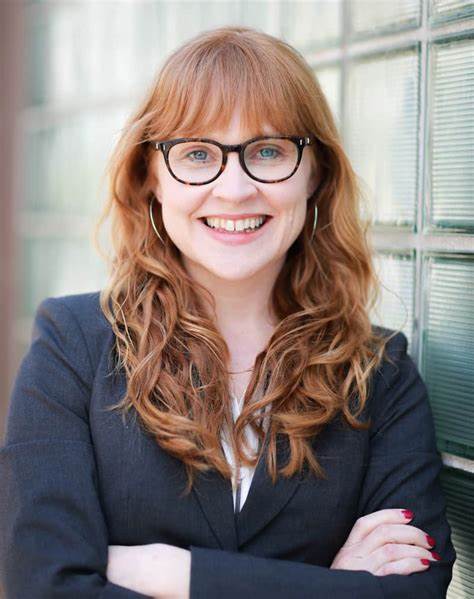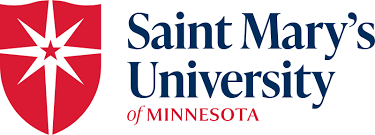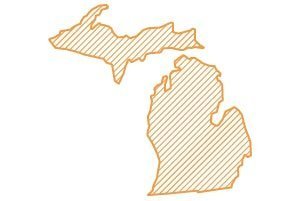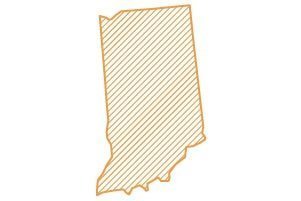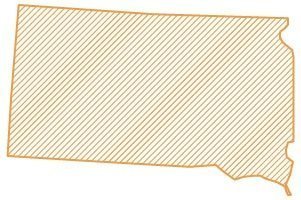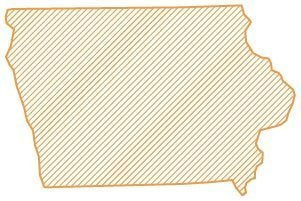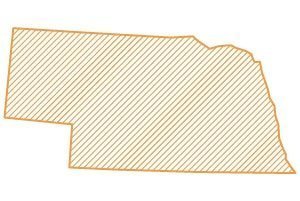Social work employment is expected to grow by 7% from 2023-2033 nationwide, according to the Labor Bureau of Statistics (1). In Minnesota, there is a 5-6% anticipated growth in social work jobs from 2022-2032 (2). The state of Minnesota has a particularly strong commitment to funding public welfare and a reputation for providing generous social services in reputable care facilities. Minnesota’s largest spending per capita is in the areas of public welfare and elementary and secondary education (3). This contributes to many social work career opportunities at both the micro and macro levels.
- University of Kentucky offers its Online Master of Social Work: Advanced Standing Program available. MSW program includes options for an advanced-standing program (30 credits) and a 60-credit regular standing program. Visit School's Website
- Arizona State University - Online offers the respected CSWE-accredited Master of Social Work online. ASU Online knows today’s MSW students need remote learning options with no compromises. That’s why you’ll find the same professors, field work requirements, and internship placement assistance that ASU provides on campus. Visit School's Website
- Grand Canyon University offers Online Social Work Degrees. Choose between Bachelors of Social Work, Master of Social Work, Master of Social Work (Advanced Standing). Visit School's Website
As such, you may find an opportunity to work with respected experts at the world-famous Mayo Clinic or with underserved families at the Hennepin County Medical Center, where a wide range of patients are brought in needing help for everything from substance abuse, domestic abuse, or basic support services. Hazelden, a drug and alcohol treatment center with multiple locations in Minnesota, is considered one of the leading substance abuse treatment centers in the region (4).
Regardless of the area of social work you decide to focus on, there are a variety of Master in Social Work (MSW) programs in Minnesota with a wide range of concentrations to choose from. Whether you are interested in changing state policy to address injustices within marginalized populations or guide individuals on their mental health journey, there are programs in Minnesota to help you meet your goals.
Issues Facing Minnesota Social Workers
As the need for mental health services has increased over the last decade, social workers in Minnesota have risen to meet that demand. According to Minnpost, in 2020, social workers provided the majority, 75%, of Minnesota’s mental health care workforce. However, as 93% of social workers in Minnesota are currently white, there are initiatives underway to diversify the workforce, as this can encourage people from racially marginalized communities to seek mental health care (5).
Another challenge unique to Minnesota is seasonal in nature. In 2023, Minnesota had an unhoused population of 10,500, with 3,000 of those being children. This is a 34% increase since 20 years prior (6). Winters in Minnesota can be deadly, so the demands on homeless shelters and the associated social work programs can be intense during the months of October to April. If you have considered working with the unhoused, you may find the twin cities to be a particularly rewarding place to work.
In addition, even though Minnesotans have the 14th highest median income in the nation (7), while enjoying a lower-than-average cost of living, the state is ranked 35th in income gap by race (8). This is only one example of numerous, significant racial and ethnic disparities in the state, and many social work jobs work to address these disparities within a variety of systems. In particular, Minnesota was brought into the spotlight after the murder of George Floyd in 2020 with a heightened concern around racial justice within Minnesota’s law enforcement agencies and the criminal justice system. Social workers across professional fields interact with the justice system on a regular basis, making them critical advocates for change within this sector.
Minnesota Social Work Schools and Masters in Social Work (MSW) Programs
The state of Minnesota is home to several reputable graduate social work programs. According to the 2024 US News & World Report school rankings, there are five Master’s of Social Work programs that rank in the top 175 schools in the nation. The University of Minnesota Twin Cities is ranked number 51 nationwide (number 1 within Minnesota), the University of St. Thomas and the University of Minnesota Duluth tie for 95th place, and St. Catherine University is ranked 120 (9).
The above-mentioned schools are all located in the Twin Cities, but they offer distinctly different learning environments. The University of Minnesota Twin Cities is a large, sprawling urban campus with over 52,000 students (10), while both St. Catherine University and the University of St. Thomas are small, quaint liberal arts schools. The two latter schools combined have a total enrollment of 12,500 students (11) (12). At the University of St. Thomas Interprofessional Center, social work, law, and psychology students work together to meet the needs of underserved people from the community.
Minnesota offers two loan repayment programs specific to social workers, the National Health Service Corps (NHSC) and the Minnesota State Loan Repayment Program (MSLRP). Both programs require that you work in one of the designated “Health Professional Shortage Areas” (HPSA).You could potentially receive up to $40,000 of loan forgiveness through the MSLRP and $50,000 through the NHSC.
Minnesota MSW Programs
Accredited Programs
Minnesota offers 14 Master of Social Work programs, all accredited by the Council on Social Work Education (CSWE). Six of these programs provide fully online learning opportunities, four provide a hybrid of in-person and online classroom experiences, and four offer an entirely in-person option (listed in detail below). None of the programs ask for a GRE as a requirement for admission on their website, but it is always beneficial to double check with the individual school’s Admissions Department.
Advanced Standing Programs
All graduate schools listed below provide advanced standing programs, meaning if you are entering the program with a Bachelor of Social Work (BSW) degree, you have the possibility of being placed on a fast track to your MSW degree. The majority of these programs require half the amount of credits as the traditional program in order to graduate. This means that you can usually obtain your MSW degree in only one year if enrolled full-time and at about half the price.
The tuition costs listed below are based on traditional programs. If you already have your BSW and enroll in an advanced standing program, the cost will be significantly lower, roughly half the cost of a traditional program. Additionally, a few schools offer discounts for residents, and sometimes this includes surrounding states such as Wisconsin and North Dakota. You need to have lived in Minnesota for one full calendar year in order to receive instate tuition. Tuition costs can change each year, so be sure to check with the school for the most current rate.
Online MSW Programs
There are six MSW programs in Minnesota that are fully online. It is important to note that while the classwork may be online, the internship/practicum experience is often still in person. Below, “Traditional Program” refers to the program track for students that do not have their BSW prior to enrollment in the MSW program. Individual schools may refer to this educational pathway with different terms, such as “general” or “regular”.
Saint Mary’s University of Minnesota
- Minneapolis, Winona & Rochester, MN
- 2-4 years
- Online
Modality: On-line
Credits required:
- Traditional Program: 60
- Advanced Standing: 30
Program Length:
- Full-time Traditional Program: 2 years
- Advanced Standing: 1 year
- Part-time: 2-4 years
Cost: $925/credit + fees
Program Overview:
Saint Mary’s online MSW program is specifically designed to prepare students for a career in clinical social work. It is possible to enroll full- or part-time, and students can pair an Addiction Studies Certificate with the MSW degree. Throughout the program, digital badges are awarded to provide verification of your completion of various online courses or programs.
Capella University
- Minneapolis, MN
- 2.5 years
- Online
Modality: On-line
Credits required:
- Traditional Program: 88 quarter credits
- Advanced Standing: 52 quarter credits
Program Length:
- Traditional Program: 2.5 years
- Advanced Standing: 1.5 years
Cost: $540/credit + fees
Program Overview:
The MSW program offered by Capella University is aimed at developing expertise in advanced generalist practice, preparing you to be an administrator, social work practitioner, supervisor, or leader in your community. There is a 10% tuition discount offered to active-duty service members, guard and reserve members, veterans, their spouses, and dependents.
Walden University
- Minneapolis, MN
- 30 months
- Online
Modality: On-line
Credits required:
- Traditional Program: 92 quarter credits
- Advanced Standing: 52-57
Program Length:
- Traditional Program: 30 months
- Advanced Standing: N/A
Cost: $555/credit + fees
Program Overview:
Walden University’s MSW program utilizes a strengths-based generalist intervention model with focus areas in addiction, child and family, healthcare, military, and trauma. The program includes interactive online scenarios, simulations, and skills labs. Walden also offers optional resources for licensure preparation.
Winona State University
- Winona and Rochester, MN
- 2 years
- Online
Modality: On-line
Credits required:
- Traditional Program: 60
- Advanced Standing: 52-57
Program Length:
- Traditional Program: 2 years
- Advanced Standing: 1 year
Cost: $497.41 + fees (Residents), $750.74 + fees (Non-Residents), $480.59 (WI, ND, SD Residents), $731/credit (Rochester campus)
Program Overview:
Winona State University’s MSW program concentrates on trauma-informed clinical social work. It is designed to prepare students for the Licensure in Independent Clinical Social Work (LICSW) and includes professional development labs to learn from social workers currently practicing in the field and to help prepare for the licensure exam.
Minnesota State University Moorhead (MSUM)
- Moorhead, MN
- Online
Modality: On-line Plus
Credits required:
- Traditional Program: 58
- Advanced Standing: 34
Program Length: N/A on website
Cost: $676/credit + fees
Program Overview:
MSUM offers an online plus MSW program, which means that the majority of instruction is online but there are some in-person or on-campus components. Students may choose one of two unique specializations: Multicultural Clinical and Social Change and Leadership. MSUM’s MSW program has been named in the top Forbes Advisor’s “Best Master of Social Work Online Programs of 2024.”
Bethel University
- St. Paul, MN
- 21 months
- Online
Modality: On-line
Credits required:
- Traditional Program: 56
- Advanced Standing: 36
Program Length:
- Traditional Program: 21 months
- Advanced Standing: 12 months
Cost: $780/credit + fees
Program Overview:
Bethel University’s MSW program focuses on the core values of scholarship, service, justice, and leadership to equip students to advocate for marginalized communities either within clinical practice or community-based engagement. The program is flexible, so you are able to tailor it to fit your goals.
Hybrid MSW Programs
Hybrid programs can offer a mixture of learning experiences. If you need the flexibility of online instruction while also tending to benefit from hands-on learning, hybrid programs may be a good option for you. There are four such programs in Minnesota with a variety of specializations.
Augsburg University
- Minneapolis, MN
- 4 years
- Hybrid
Modality: Hybrid
Credits required:
- Traditional Program: 58-59
- Advanced Standing: 37-38
Program length:
- Full-time Traditional Program: 2 years
- Part-time Traditional Program: 4 years
- Full-time Advanced: 13 months
- Part-time Advanced Standing: 25 months
Cost: $773/credit + fees
Program Overview:
Augsburg University allows students to choose between full- or half-time enrollment with options to attend class on weeknights or weekends. Their two specializations include Anti-Oppressive Clinical Practice (AOCP) or Anti-Oppressive Macro Practice (AOMP). Students enrolled in the AOCP pathway can also obtain their LADC (Licensed Alcohol and Drug Counselor).
University of Minnesota-Duluth (UMD)
- Duluth, MN
- Hybrid
Modality: Hybrid
Credits required:
- Traditional Program: 51
- Advanced Standing: 34
Program Length: N/A on website
Cost: $39,190 + fees (cost per credit information not on website)
Program Overview:
UMD’s hybrid model offers Advanced Generalist and Generalist programs with a special focus on American Indian social services as UMD is home to the Center for Regional and Tribal Child Welfare. The three areas of study you can choose from include child welfare, mental health/clinical social work, and macro/community-based social work. About 60% of students receive scholarships to help cover tuition.
The College of St. Scholastica
- Duluth, MN
- 2 years
- Hybrid
Modality: Hybrid
Credits required:
- Traditional Program: 63
- Advanced Standing: 38
Program Length:
- Traditional Program: 2 years
- Advanced Standing: 1 year
Cost: $725/credit + fees
Program Overview:
The College of St. Scholastica provides a hybrid MSW program that incorporates in-person classes such as seminars, small group activities, labs, and live lectures along with online instruction. Their program is specifically focused on clinical practice, while incorporating an understanding of social policy and social and ecological justice issues.
Minnesota State University Mankato (MNSU)
- Mankato, MN
- 2 years
- Hybrid
Modality: Hybrid
Credits required:
- Traditional Program: 59
- Advanced Standing: 34
Program Length:
- Traditional Program: 2 years
- Advanced Standing: 1 year
Cost: $647.17/credit + fees (Residents), $912.17/credit + fees (Non-Residents)
Program Overview:
MNSU’s MSW program focuses on Advanced Generalist social work, particularly within small and rural communities. Upon graduation, you will be eligible for a License in Graduate Social Work (LGSW), which enables you to practice at both the micro and macro level, though not clinical.
In-person MSW Programs
Minnesota has four MSW programs that offer fully in-person programmatic experiences (though they may offer other modalities as well). This can be particularly beneficial for students that need more structure and social interaction to aid their learning. Please note that two of the universities listed below, St. Cloud State University and the University of St. Thomas, offer both online or hybrid opportunities, so you are able to choose the learning experience that works best for you.
University of Minnesota-Twin Cities (UMN)
- Minneapolis and St. Paul, MN
- 4-5 semesters
- Campus
Modality: On-campus
Credits for graduation:
- Traditional Program: 53
- Advanced Standing: 34
Program Length:
- Traditional Program: 4-5 semesters
- Advanced Standing: 3 semesters
Cost: $832/credit + fees
Program Overview:
UMN Twin Cities has the highest-ranked MSW program in Minnesota. It offers concentrations grounded in social justice in the fields of clinical mental health, community practice, families and children, and health, disability, and aging. There are both full- or part-time enrollment options.
St. Catherine University (St. Kate’s)
- St. Paul, MN
- 2-4 years
- Campus
Modality: On-campus
Credits required:
- Traditional Program: 51
- Advanced Standing: 33
Program Length:
- Traditional Program: 2-4 years
- Advanced Standing: 1-3 years
Cost: $760/credit + fees
Program Overview:
St. Kate’s MSW program has a strong emphasis on social justice, small class sizes, and an array of field placements in the local community. Ninety percent of graduating students pass their licensing exam, which is higher than the national average. Students may receive a 10% reduction in tuition if employed by a St. Kate’s corporate or community partner.
St. Cloud State University
- St. Cloud, MN
- Online + Campus + Hybrid
Modality: On campus, Hybrid or Online
Credits required:
- Traditional Program: 59
- Advanced Standing: 32-35
Program Length: N/A on website
Cost: $517/credit + fees (Residents), $785/credit + fees (Non-Residents)
Program Overview:
The MSW program at St. Cloud State University has several delivery options: in-person, online, and/or hybrid. They utilize an anti-oppression lens with a focus on race, class, and gender and offer full- and part-time tracks.
University of St. Thomas
- 2-4 years
- Online + Campus + Hybrid
Modality: On campus, Hybrid or Online
Credits required:
- Traditional Program: 56
- Advanced Standing: 38
Program Length:
- Traditional Program: 2-4 years
- Advanced Standing: 1-3 years
Cost: $825/credit + fees
Program Overview:
St. Thomas offers both in-person and hybrid MSW programs specifically focused on preparing clinical social workers. Students may apply to become an Area of Emphasis Scholar in one of two clinical practice areas: practice with people of immigrant and refugee backgrounds or practice with older adults.
Dual-Degree Programs
Four universities—the University of Minnesota Twin Cities, St. Catherine University, the University of St. Thomas, and Augsburg University—offer dual degree programs, which allow you to earn your MSW degree alongside another graduate-level degree. At the University of Minnesota Twin Cities, you can obtain your MSW along with either your Master of Public Health (MPH), Master of Public Policy (MPP), or Master of Urban and Regional Planning (MURP). At St. Catherine University, you can simultaneously earn your MSW and Master of Arts in Holistic Health Studies (MA). Augsburg University offers a program that combines a MSW with a Master in Business Administration (MBA), and a J.D./MSW dual degree program is available to students at the University of St. Thomas.
FAQs for Aspiring Minnesota Social Workers
1) What Can I Do With an MSW Degree in Minnesota?
As previously mentioned, Minnesota is a large investor in social services, resulting in a range of possible social work jobs in the state. There are several top-ranked medical facilities, including Mayo Clinic and Hazelton Betty Ford Foundation drug and alcohol treatment centers, offering opportunities in the healthcare field. Other possibilities include working with children and youth in schools and community centers, policy reform, case management, community organizing, and teaching at the undergraduate level. Clinical practice is also a growing opportunity as the need for mental health practitioners continues to rise and clinical social workers are filling the majority of those positions in Minnesota.
2) Which Minnesota School of Social Work has the best MSW program?
According to the U.S. News & World Report’s 2024 Best Graduate Schools rankings, the University of Minnesota Twin Cities is the top-ranked school in Minnesota and is ranked 51st nationwide. The University of Minnesota Duluth is ranked second in Minnesota, and the University of St. Thomas is ranked third.
3) How much does a MSW in Minnesota cost?
The cost of graduate school for social work in Minnesota varies by school, with some of the variance due to whether the school is public vs. private, you are enrolled online or in-person, your state residency status, and whether or not you enter the traditional or advanced standing program. Generally, the range is roughly $25,000 to $55,000 for tuition, with the average being $41,442 for the traditional program (utilizing MN resident tuition prices). There are often additional fees, however, which are important to factor into the total cost. Most schools offer financial aid packages that may include scholarships or grants depending on your eligibility.
Additionally, Minnesota offers two loan repayment programs for social workers, the National Health Service Corps (NHSC) and the Minnesota State Loan Repayment Program (MSLRP). The MSLRP offers up to $40,000 of loan forgiveness, and the NHSC offers up to $50,000. Check their respective websites for eligibility specifics.
4) How much does a social worker in Minnesota make?
According to Salary.com, the average income for a social worker in Minnesota with their MSW degree in 2025 is $75,489. The typical range, however, includes salaries from around $68,374 to $83,232 (13). Factors that impact salary include whether you are operating in rural or urban areas and the field in which you work. For instance, social workers holding leadership positions in government agencies will tend to make more than those working within the non-profit sector. Additionally, social workers with their LICSW operating a private therapy practice generally earn within the higher range of salaries.
5) What is the ROI of getting an MSW in Minnesota?
There are a number of factors contributing to the return on investment (ROI) of attending a graduate school to obtain your MSW in Minnesota. For one thing, the cost of living is lower in Minnesota in comparison to the majority of other states in the country (14). Additionally, the two labor sectors with the largest recent employment gains included education and human services and government, both of which employ many social workers (15).
Other considerations include the average MSW program cost, which is $41,442, and the average social work salary, $75,489, in Minnesota. This indicates a fairly good ROI, particularly if you anticipate having a higher salary with a MSW degree than if you never obtained it.
6) How long does it take to become a social worker in Minnesota?
This depends on whether you are a full- or part-time student and whether or not you enter the program with your BSW. Most full-time traditional programs take 2 years, while full-time advanced standing programs are usually 1 year. Part-time programs generally require 3-4 years to complete.
Licensure and Professional Development Resources
Minnesota recently passed legislation to become part of the Social Work Services Licensure Compact. This interstate compact will allow social workers with a license in one of its member states a greater level of mobility between other member states. To learn more information and keep track of when multistate licenses will be issued, check out their website here.
- Social Work License Requirements in Minnesota
- Minnesota Board of Social Work
- National Association of Social Workers, Minnesota Chapter
- Minnesota School Social Workers Association
- Minnesota Society For Clinical Social Work
Sources:
- https://www.bls.gov/ooh/community-and-social-service/social-workers.htm
- https://mn.gov/deed/data/data-tools/employment-outlook/?utm_source=chatgpt.com
- https://www.urban.org/policy-centers/cross-center-initiatives/state-and-local-finance-initiative/projects/state-fiscal-briefs/minnesota
- www.hazelden.org
- https://www.minnpost.com/mental-health-addiction/2020/03/licensed-for-just-three-decades-social-workers-are-now-the-backbone-of-minnesotas-mental-health-workforce/
- https://www.wilder.org/mnhomeless/results
- https://worldpopulationreview.com/state-rankings/median-household-income-by-state
- https://www.usnews.com/news/best-states/rankings/opportunity/equality/income-gap-race
- https://www.usnews.com/best-graduate-schools/top-health-schools/social-work-rankings/minnesota?_sort=rank-asc
- https://twin-cities.umn.edu/
- https://www.stkate.edu/
- https://www.stthomas.edu/
- https://www.salary.com/research/salary/benchmark/social-worker-msw-salary/mn
- https://worldpopulationreview.com/state-rankings/cost-of-living-index-by-state
- https://mn.gov/deed/newscenter/press-releases/?id=666146
